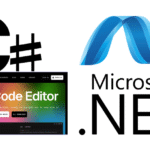
Today, we are going to explore how diversity in team composition can drive creativity, problem-solving and ultimately improve project outcomes. We will dive into the importance of effective collaboration techniques for maximizing the impact of teams with varied levels of expertise.
More and more companies are embracing mixed level .net development teams, recognizing the importance of a blend of experienced and junior developers with diverse skillsets. When harnessed effectively, these teams can lead to successful projects, but it’s essential to know how to navigate the challenges that can arise when managing a diverse team.
The Strength of Diversity in .NET Teams
In today’s rapidly evolving tech landscape, diversity in .NET development teams is becoming increasingly important. Having a mix of experienced and junior developers with diverse skillsets can lead to improved problem-solving, creativity, and innovation.
Pairing up developers with different backgrounds and areas of expertise helps to bring fresh perspectives to the table, enabling the team to tackle complex problems with ease. For example, senior developers can provide guidance to junior developers while junior developers can bring in new ideas that senior developers may not have considered.
Moreover, diverse teams are more likely to produce better outcomes as they are better equipped to identify potential issues and weaknesses in the development process. This not only increases the efficiency of the team but also the quality of the outputs produced.
Therefore, it is important to create a work environment that fosters diversity and encourages open communication and collaboration. This means providing opportunities for different skill sets to be utilized and recognized, and implementing effective strategies to manage team dynamics and communication. By embracing diversity in .NET teams, companies can attract and retain top talent, while also driving innovation and achieving exceptional results.
Challenges in Managing Mixed .NET Expertise Levels
Managing teams with mixed .NET expertise levels can be a difficult task. On one hand, experienced developers can bring a wealth of knowledge and skill to the team. They can guide and mentor junior developers, share best practices, and provide invaluable insights into the project’s technical requirements. On the other hand, junior developers can bring a fresh perspective, new ideas, and a willingness to learn.
However, it is essential to balance the strengths of both experience levels to maximize team productivity and ensure project success. One of the biggest challenges in managing mixed .NET teams is to keep everyone on the same page. Misunderstandings, lack of clarity, and communication breakdowns can lead to unnecessary delays, rework, and missed deadlines.
To address this challenge, team leaders can adopt various strategies to create a cohesive and collaborative work environment. One approach is to establish a common understanding of project goals and objectives. This can be achieved through regular team meetings, check-ins, and progress updates. By keeping everyone informed, team leaders can ensure that everyone is on the same page and working towards the same goals.
Another approach is to provide mentorship and support for junior developers. By pairing them with experienced developers, they can learn from their peers and gain valuable insights into the project’s technical requirements. They can also receive guidance and feedback, which can help them to improve their skills and knowledge.
Finally, it is essential to encourage open communication and create a supportive environment. Team leaders should be approachable and encourage team members to ask questions and share ideas. By fostering a collaborative culture, team members can feel more comfortable sharing their thoughts and concerns, which can lead to improved problem-solving and creativity.
Team Collaboration Strategies for .NET Development
When working with mixed .NET development teams, it’s essential to have effective collaboration strategies in place to ensure everyone is working towards the same goals and maximizing their strengths. Here are some strategies for collaboration between experienced and junior .NET developers:
Establish Clear Communication Channels
Clear communication channels are essential for teams with varying levels of expertise. Use project management software to assign tasks, track progress, and communicate updates. Regular meetings with agendas can help ensure everyone is on the same page. Consider using virtual collaboration tools, such as video conferencing and shared document repositories, to foster collaboration between geographically dispersed teams.
Define Common Goals and Objectives
Clearly defining common goals and objectives can help focus the team and create a sense of purpose. Make sure that everyone understands the project’s objectives and how their contributions will help to achieve them. Encourage open communication and collaboration to ensure that everyone is working towards the same goals.
Encourage Active Participation
Encourage all team members, regardless of experience level, to actively participate. Create an environment where everyone feels comfortable sharing ideas and asking questions. Junior developers can bring fresh perspectives, while experienced developers can offer guidance and mentorship. Foster an environment of continuous learning and growth.
Provide Opportunities for Cross-Functional Training
Provide opportunities for cross-functional training to allow team members with different expertise levels to learn from one another. Encourage knowledge sharing and mentorship to help junior developers gain valuable experience and expertise. By providing opportunities for collaboration and growth, you can unlock the full potential of your mixed .NET development team.
Achieving Synergy in .NET Teams with Diverse Skills
Diversity is a strength in mixed .NET development teams, bringing together professionals with a range of skills and expertise. Achieving synergy in these teams requires leveraging this diversity to create a dynamic, collaborative environment.
One effective strategy for achieving synergy is to encourage open communication and active collaboration. By fostering an atmosphere of mutual support and respect, team members can learn from each other’s unique perspectives and experiences. This can lead to more creative problem-solving and improved project outcomes.
Another way to achieve synergy is by establishing common goals and working towards them together. This can help align the team’s efforts and create a sense of shared purpose. It is important for each team member to understand their role in achieving these goals and for everyone to be on the same page about the project’s overall vision.
Successful collaboration in mixed .NET teams requires a willingness to embrace diversity and work towards a common goal. By leveraging each other’s unique skills and experiences, team members can unlock their full potential and achieve great success.
Effective Communication Channels for Mixed .NET Teams
Effective communication is crucial in mixed .NET development teams to ensure smooth collaboration and project success. As team members may work remotely or have varying levels of expertise, it’s important to establish clear communication channels and use appropriate tools to facilitate communication. Here are some strategies for effective communication:
Regular Meetings
Schedule regular team meetings to discuss project progress, review tasks, and address any issues. Use video conferencing software or a conference call line to ensure everyone can participate, regardless of their location. These meetings should encourage open communication and allow team members to share their thoughts and ideas.
Project Management Software
Project management software can help teams to organize tasks, track progress, and collaborate on documents. Tools like Asana, Jira, or Trello can help to keep everyone on the same page and ensure that deadlines are met. Use these tools to assign tasks, set deadlines, and monitor progress.
Virtual Collaboration Tools
Virtual collaboration tools like Skype, Microsoft Teams, and Slack can be used to facilitate real-time communication between team members. These tools allow for video and voice calls, instant messaging, and file sharing, making it easy to collaborate on documents and communicate with team members, regardless of their location.
Email Communication
Email is a ubiquitous communication tool that can be used to share ideas, update team members, and address any issues that arise. Use email to send meeting invitations, share project updates, and provide feedback on team members’ work. However, be mindful of how often you use email as it’s not always the fastest or most efficient method of communication.
Establish Common Goals
Finally, it’s important to establish common goals for the team and ensure that everyone is working towards the same objective. Set clear expectations for project deliverables, deadlines, and quality standards. This will help to keep everyone focused and aligned, and minimize any misunderstandings or conflicts that may arise.
By ensuring effective communication channels, mixed .NET development teams can maximize their potential and achieve project success. Experiment with different tools and strategies to find what works best for your team, and remember to keep an open mind and encourage input from all team members.
Fostering a Collaborative Culture in Mixed .NET Teams
Creating a collaborative culture within mixed .NET teams can be challenging, but it’s essential for achieving success. By building a culture of collaboration, team members can feel more confident sharing their knowledge and ideas, contributing to better problem-solving and innovation.
The benefits of a collaborative culture include:
- Increased trust and morale among team members
- More effective communication and knowledge sharing
- Higher levels of engagement and motivation
- Better outcomes and improved project success
Cross-Functional Training
One way to foster a collaborative culture is by providing cross-functional training. By allowing team members to learn about different aspects of the development process, they can better understand each other’s roles and responsibilities. This can lead to improved communication and collaboration.
For example, a junior developer could attend training sessions on project management, while an experienced developer could learn about new technologies or tools.
Team-Building Activities
Team-building activities can also help create a collaborative culture. These activities can be fun and engaging, while also building trust and camaraderie among team members.
For example, team members could participate in a hackathon or work together on a project outside of their normal duties. These types of activities can help break down barriers and create a more inclusive environment.
Knowledge Sharing
Encouraging knowledge sharing is another key element of a collaborative culture. By sharing their expertise, team members can learn from each other and contribute to better outcomes.
For example, an experienced developer could mentor a junior developer or share their knowledge of a particular tool or technology. By encouraging knowledge sharing, the team can create a culture of continuous learning and improvement.
In summary, fostering a collaborative culture is essential for success in mixed .NET development teams. By providing cross-functional training, team-building activities, and encouraging knowledge sharing, teams can build trust, improve communication, and achieve better outcomes.
Mentorship and Skill Development in Mixed .NET Teams
One of the key benefits of having a mix of experienced and junior .NET developers on a team is the opportunity for mentorship. Mentoring provides junior developers with guidance and support to develop their skills, while also offering senior developers the chance to pass on their knowledge and expertise.
Mentorship programs can take many forms and may include regular one-on-one meetings, pair programming, or team-wide knowledge sharing sessions. A successful mentorship program should be tailored to the needs and goals of each individual team member.
Encouraging skill development is also crucial for the success of mixed .NET teams. Providing opportunities for ongoing learning, such as attending conferences or taking online courses, can improve the skills of all team members. Additionally, cross-functional training can help team members gain a deeper understanding of other areas of the project and improve collaboration.
Establishing a culture of continuous learning and mentorship can not only help individual team members grow but can also lead to improved collaboration and better project results.
Addressing Conflict in Mixed .NET Teams
Conflict is a natural part of any team dynamic, and mixed .NET development teams are no exception. When working with individuals from different backgrounds and skill levels, conflicts are bound to arise. These conflicts are not necessarily a negative thing; in fact, when addressed properly, conflicts can lead to growth and innovation within the team. However, if left unaddressed, conflicts can escalate and cause serious damage to team morale and project success.
It’s important for team leaders to have a plan in place for addressing conflict. Clear communication channels should be established, and team members should feel comfortable voicing their concerns and opinions. Active listening is also key to resolving conflicts. Each team member should feel heard and respected, and solutions should be reached collaboratively rather than imposed by a single individual or party.
Strategies for Addressing Conflict
Here are some strategies for addressing conflict in mixed .NET development teams:
- Encourage open communication: Create a culture where team members feel comfortable discussing their concerns and issues. Encourage team members to speak up if they notice something isn’t working or if they have an idea for improvement.
- Practice active listening: When a team member voices a concern or issue, listen actively rather than simply waiting for your turn to speak. Try to see the issue from their perspective, and work together to find a solution.
- Establish clear conflict resolution processes: Put a process in place for addressing conflicts so that everyone knows what to expect. This could include scheduling a meeting to discuss the issue, bringing in a mediator, or creating an action plan to resolve the conflict.
- Create a supportive environment: Foster a culture of support and collaboration within the team. Encourage team members to work together and support one another, and acknowledge and celebrate successes as a team.
By implementing these strategies and creating a culture of open communication and collaboration, conflicts can be addressed in a productive and positive way within mixed .NET development teams.
Embracing Continuous Learning in Mixed .NET Teams
Continuous learning is vital for success in today’s fast-paced world of .NET development. With new technologies and programming languages constantly emerging, it’s essential for developers to stay up-to-date with the latest trends and best practices. Encouraging ongoing skill development is not only beneficial for the individual team members but also for the team as a whole.
Implementing a culture of continuous learning can be achieved through various strategies, such as:
- Providing access to online learning resources such as video tutorials, webinars, and e-books
- Scheduling regular training sessions and workshops
- Encouraging participation in industry events and conferences
- Pairing junior developers with experienced mentors who can guide them in developing new skills
Incorporating continuous learning into the team’s workflow can lead to improved problem-solving, increased creativity, and better project outcomes. By embracing a culture of continuous learning, mixed .NET teams can unlock their full potential and stay ahead of the curve in a constantly evolving industry.
Remote Collaboration in Mixed .NET Teams
Remote collaboration is becoming increasingly common within mixed .NET development teams, but it can present unique challenges. Communication barriers, time zone differences, and technical difficulties can make it difficult to work together effectively. However, with the right tools and strategies, remote collaboration can be just as successful as in-person collaboration.
Communication Tools
Effective communication is key to successful remote collaboration. Video conferencing tools, such as Zoom and Skype, can help team members feel more connected. Project management software, such as Asana and Trello, can help keep everyone on the same page. Shared document repositories, such as Google Drive and Dropbox, can ensure that everyone has access to the same files.
Virtual Collaboration Strategies
Remote collaboration requires a different approach to teamwork. It is important to establish clear goals and deadlines, and to communicate regularly. Virtual team-building activities, such as online games or video happy hours, can help team members feel more connected. It is also important to be flexible and adaptable, as technical difficulties and time zone differences can impact productivity.
Embracing Remote Work
Remote collaboration can be a valuable asset for mixed .NET development teams. It can provide access to a wider range of talent, as team members can work from anywhere in the world. It can also reduce overhead costs, as there is no need for a physical office. By embracing remote work, mixed .NET development teams can unlock their full potential.
Conclusion: Unlocking the Potential of Mixed .NET Development Teams
Embracing diversity within .NET development teams is key to unlocking their full potential. Mixed teams with a variety of experience levels and skillsets can lead to improved problem-solving, creativity, and project success. However, managing teams with varying levels of expertise can be challenging. Effective collaboration techniques, communication channels, and a supportive culture are essential for maximizing the impact of these teams.
By fostering a collaborative culture and embracing continuous learning, mixed .NET teams can achieve synergy and reach new heights of success. Mentorship programs and cross-functional training can encourage knowledge transfer and skill development, while virtual collaboration tools and shared document repositories provide opportunities for effective remote collaboration.
It is essential to address conflict and maintain open communication channels within the team. Conflict resolution strategies should include active listening and creating a supportive environment where team members feel valued and heard.
Implementing innovative team collaboration techniques and strategies can unlock the potential of mixed .NET development teams, leading to improved project outcomes and greater success.
Unlocking the full Potential of mixed .NET Development Teams
Innovative team collaboration techniques are key to unlocking the full potential of mixed .NET development teams. By embracing diversity, fostering a supportive culture, and encouraging ongoing skill development, teams can achieve synergy and reach new heights of success.
FAQ
Q: What is the benefit of having mixed .NET development teams?
A: Mixed .NET development teams bring diversity in team composition, which leads to improved problem-solving and creativity.
Q: How can diverse skillsets in a .NET team be leveraged for better results?
A: By leveraging the diverse range of skills and expertise in a mixed .NET team, synergy can be achieved, resulting in better project outcomes.
Q: What are the challenges in managing teams with mixed .NET expertise levels?
A: Managing teams with varying levels of expertise can be difficult, but strategies can be implemented to effectively manage and leverage the strengths of both experienced and junior developers.
Q: What are some collaboration strategies for effective communication between experienced and junior .NET developers?
A: Different collaboration strategies, such as clear communication channels and establishing common goals, can foster effective communication and cooperation between team members.
Q: How can effective communication be ensured in mixed .NET teams?
A: Effective communication can be ensured in mixed .NET teams by utilizing various communication tools and platforms, regular meetings, project management software, and virtual collaboration tools.
Q: How can a collaborative culture be fostered in mixed .NET teams?
A: Creating a collaborative culture within mixed .NET teams can be achieved through cross-functional training, team-building activities, and knowledge sharing.
Q: What is the role of mentorship in mixed .NET teams?
A: Mentorship plays a vital role in mixed .NET teams by promoting skill development and knowledge transfer. It is important to establish mentorship programs and encourage ongoing learning within the team.
Q: How can conflicts within mixed .NET teams be addressed?
A: Conflicts within mixed .NET teams can be resolved through open communication, active listening, and creating a supportive environment.
Q: Why is continuous learning important in mixed .NET teams?
A: Continuous learning is crucial in the fast-paced world of .NET development as it helps individuals and teams stay updated and adapt to new technologies and trends.
Q: How can remote collaboration be effectively managed in mixed .NET teams?
A: Remote collaboration within mixed .NET teams can be facilitated through video conferencing, project management software, and shared document repositories.

Gordon is a distinguished technical author with a wealth of experience in software development, specializing in .NET C#. With a career spanning two decades, he has made significant contributions as a programmer and scrum master at prestigious organizations like Accenture and Boston Consulting Group, where he has played a pivotal role in delivering successful projects.
Since the release of .NET C# in 2001, Gordon’s passion for this powerful programming language has been unwavering. Over the past 20 years, he has honed his expertise in .NET C# development, exploring its vast capabilities and leveraging its robust features to create cutting-edge software solutions. Gordon’s proficiency extends to various domains, including web applications, desktop software, and enterprise systems.
As a technical author, Gordon remains committed to staying at the forefront of technological advancements, continuously expanding his skills, and inspiring fellow technologists. His deep understanding of .NET C# development, coupled with his experience as a programmer and scrum master, positions him as a trusted resource for those seeking guidance and expertise. With each publication, Gordon strives to empower readers, fuel innovation, and propel the field of scientific computer science forward.






